Indicator’s Hammer vol. 3: Imperialism, War & Race
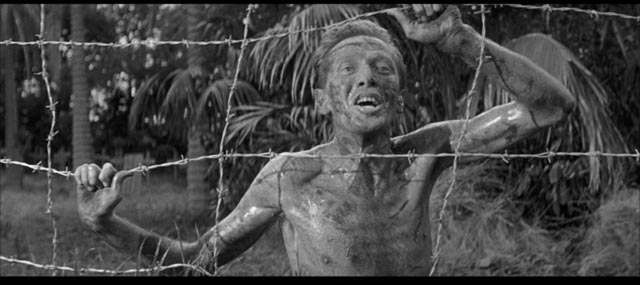
As social attitudes change, the way certain movies are seen evolves. Buried assumptions become visible and what was once popular becomes problematic. Some things become difficult to watch, even when we make allowances for the times in which movies were made. But we have to be careful about those allowances, resisting the urge to excuse something because “that’s just how people thought back then”. Outdated treatments of gender make many a generic romantic comedy less than entertaining today – particularly given that at the same time there were many films being made with strong female characters and more nuanced attitudes, showing that some degree of enlightenment was possible even in more restrictive times. But even more problematic than the treatment of women in popular culture has been the depiction of race.
It turns out that there were people even “back then” who raised objections. There were mass protests when The Birth of a Nation (1915) was first released because of its incendiary depiction of African Americans – imagery which today, even as we acknowledge Griffiths’ cinematic accomplishments, render the film difficult to watch without a sense of disgust and outrage. Griffiths’ grotesque caricatures underlie the bug-eyed comedy of Stepin Fetchitt and the childishness of Butterfly McQueen as Prissy in Gone With the Wind (1939), all of them drawn from 19th Century minstrelsy which lingered long into the 20th Century through Al Jolson’s penchant for blackface, Fred Astaire’s Bojangles “tribute” in Swing Time (1936), and on up to Soul Man (1986).
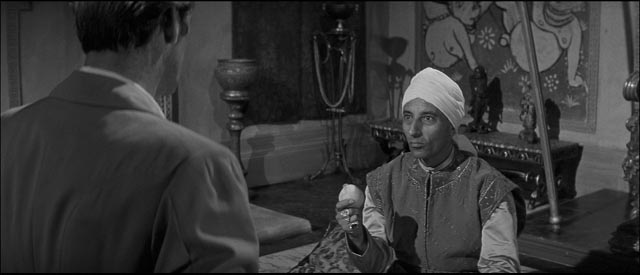
in Terence Fisher’s The Stranglers of Bombay (1959)
This aggressively performative idea of race strips authenticity from those it parodies – blackness becomes a ridiculous mirror image of white authenticity and dominance. The fact that it still crops up today (excused by politicians and television talking heads whenever embarrassing photographs turn up) while the Right becomes ever more aggressive in its defence of white privilege and denial of racism, now and in history, is one of the more depressing aspects of contemporary society. Even a money-grubbing corporation like Disney has enough self-awareness to know that it might be better not to milk Song of the South (1946) with the kind of multiple reissues it’s subjected all its other features to, even the racially problematic Peter Pan (1953).
In movies there are two distinct problems with the treatment of race: attitudes embedded in the narrative itself and “blackface casting”, in which white actors are cast as any number of different racial and ethnic types. These issues loom over Indicator’s third Hammer box set, Blood & Terror. While racism in the United States is embedded in the still unresolved history of slavery, for the English it stems from centuries of controlling a world-spanning empire, oppressing and exploiting peoples on every continent. Intrinsic to that control was an unquestioned sense of national and racial superiority which by definition viewed the subject populations as lesser-than, as unworthy.
*
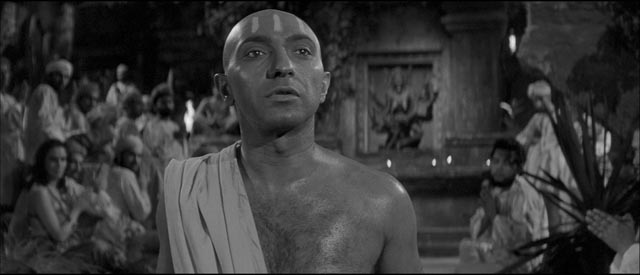
The Stranglers of Bombay (Terence Fisher, 1959)
The two historically-based adventure films in the set express these attitudes, although there are traces of awareness in Terence Fisher’s The Stranglers of Bombay (1959), perhaps in part due to the fact that it was written by an American, David Zelag Goodman (who went on to write Sam Peckinpah’s masterpiece Straw Dogs [1971] and Michael Anderson’s camp sci-fi Logan’s Run [1976]). Goodman’s script was loosely based on a memoir by a colonial officer named Captain Sleeman who was assigned in 1830 to investigate the alarming number of disappearances among travelers in India.
What years of investigation uncovered was a secret society of Kali-worshippers who infiltrated caravans, killed everyone and stole all the goods. Supposedly this cult, calling themselves Thugs, had been at work for centuries with victims numbering in the millions (estimates put it at an average of 1000 a year). Sleeman’s efforts eventually saw about five hundred hanged and many more turned Queen’s evidence, telling hair-raising stories of their crimes.
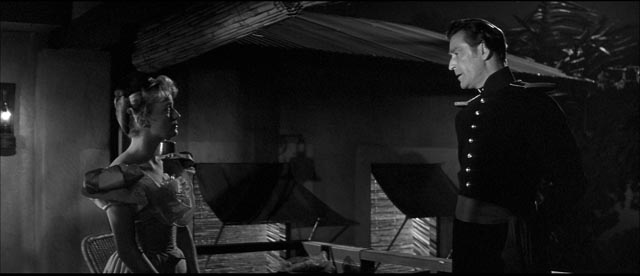
The appeal of this story to Hammer lay in the possibility of providing some historical justification for the sadistic horrors which were being critically condemned in their recent colour Gothic movies. To add an air of legitimacy, Stranglers was shot in widescreen black-and-white. But as with many crime movies, the veneer of moral concern seems to be there as cover and justification for the lingering displays of cruelty and violence, ranging from the cult’s initiation ceremonies (cutting and branding new members, followed by proving worthiness by killing prisoners) to their slaughter of travelers (by strangulation with a silk cloth) to staking the hero to the ground and setting a cobra on him. There are graphic blindings and limb-loppings and a severed hand tossed onto a dinner table as warning.
One of the oddest, unexplained details of the film is the silent presence of a woman in the cult’s temple. Karim (Marie Devereux), displaying a great deal of cleavage, is obviously sexually aroused by the torture, but serves no obvious narrative purpose. She is a spectator, but seems an odd choice as stand-in for the movie’s audience, encouraging a sexualized reading of the male-on-male cruelty. One commentator on the disk suggests that she’s actually the physical embodiment of Kali. While most of her shots were trimmed for the U.S. release, it’s odd that the British censors apparently weren’t perturbed – they gave the film an A classification (children admitted with an adult), rather than an X.
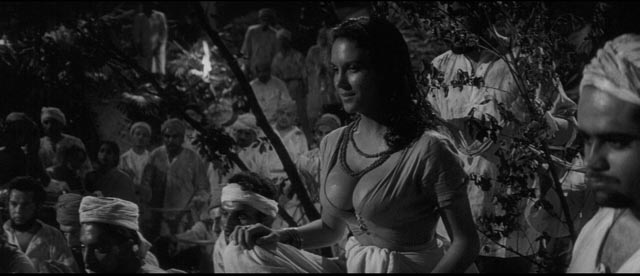
But perhaps there’s another explanation for her presence: she feminizes the wild Otherness of India in contrast to the “civilized” masculinity of the British. She is counterbalanced by Mary Lewis (Jan Holden), the sensitive wife of hero Captain Harry Lewis (Guy Rolfe), the one decent Englishman present among snobs and bigots, who nonetheless is given to a reflexive callousness even as he fights against the colonial administration to solve the mystery of the cult’s crimes. He even warns his commander at one point that British arrogance will eventually cause the subjugated population to rise up and throw off the yoke. But he can also be casually dismissive of valuable information provided by his own loyal servant, at least until Mary tells him to stop being an ass and listen.
Implicit in the film is the contrast between a (flawed) European civilization and an exotic and dangerous Other, between the modern and the primitive, with the former eventually subduing the worst excesses of the latter and helping to put it on the road to a more enlightened future. This underlying arrogance is reinforced by the casting of non-Indian actors in the “native” roles. The leader of the cult is played by Cypriot George Pastell and his second-in-command by the half-Spanish Roger Delgado, while Lewis’ faithful servant Ram Das is played by Norwegian Tutte Lemkow! It could be argued, as it often was, that this kind of casting was simply due to a lack of racially appropriate performers, but it’s really jarring to see a distinctive Londoner like Warren Mitchell turn up as a market stall owner sporting a pidgin-English accent. At least the duplicitous Indian aristocrat Patel Shari is played by Indian-born Hammer regular Marne Maitland (who himself turns up in multiple “ethnic” roles in other movies).
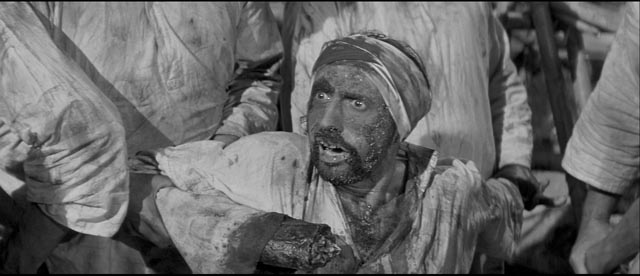
This ethnic mix-and-match has been common throughout film history (Jews were popular in Hollywood for Native American roles in westerns), displaying a casual disregard for non-white identities – all foreigners are interchangeable in their difference. Even worse is the caricaturing of race by obviously white actors in makeup, which rears its ugly head in the next film in the set.
*
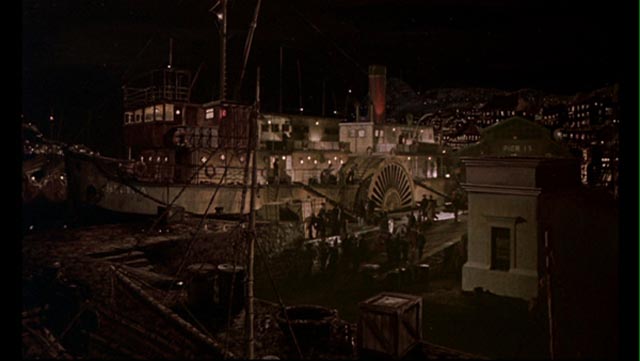
The Terror of the Tongs (Anthony Bushell, 1961)
Terence Fisher’s directorial skills, Arthur Grant’s excellent widescreen monochrome photography and Guy Rolfe’s committed performance go a long way towards mitigating these issues in The Stranglers of Bombay, giving the film something of the imperialist gravitas of earlier colonial adventures like The Four Feathers (1939) and Gunga Din (also 1939) … with that added element of Hammer’s sadistic violence. The same can’t be said for the studio’s follow-up, a rushed, thinly disguised rehash, which took the plunge into full-on racial drag.
Directed by actor Anthony Bushell (Colonel Breen in the BBC production of Nigel Kneale’s Quatermass and the Pit [1958-59]), shot in gaudy colour on a few studio sets (one of which is quite impressive), The Terror of the Tongs (1961) hearkens back to early 20th Century “yellow peril” pulp thrillers, particularly the novels of Sax Rohmer about the insidious Fu Manchu. Rather than Imperial India, the setting is British-ruled Hong Kong in 1910. The authorities are a mix of colonial bureaucrats who don’t bother to make an effort to understand Chinese society (like the East India Company officials in the previous film) and corrupt opportunists who make a personal profit by aligning themselves with local criminals.
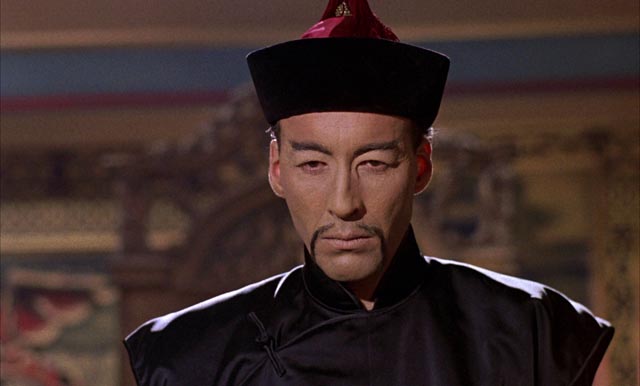
Those criminals are members of the Red Dragon Tong, based in Beijing (or rather “Peking”), and run locally by the ruthless, sadistic Chung King, who uses drugs, sex and violence to control his criminal underlings and terrorize the local population. When the underground resistance gets hold of a list of Tong members, Chung’s minions make a serious miscalculation; learning that the list may unknowingly be hidden in the residence of freighter captain Jackson Sale (Geoffrey Toone), they break in and torture and kill the captain’s sixteen-year-old daughter. With little help from the British authorities, Sale works his way into the local community, prowling low dives and opium dens and eventually being used by the resistance as an only partly aware weapon in their quest to destroy the Tong.
Sale’s stalwart courage earns him the adoration of Lee, a woman sold into slavery as the wife of a Tong henchman. She moves in with him, offers occasional advice on dealing with the Chinese, and ultimately sacrifices her life for the Englishman because, you know, his life is worth so much more than her own. The routine ethnic casting includes French actress Yvonne Monlaur as the fawningly subservient Lee and Marne Maitland again as the leader of the resistance, Roger Delgado again as Chung’s chief henchman, Hammer favourite Milton Reid as a torturer and assassin, and a very western-looking Charles Lloyd Pack as a murderous Chinese doctor.
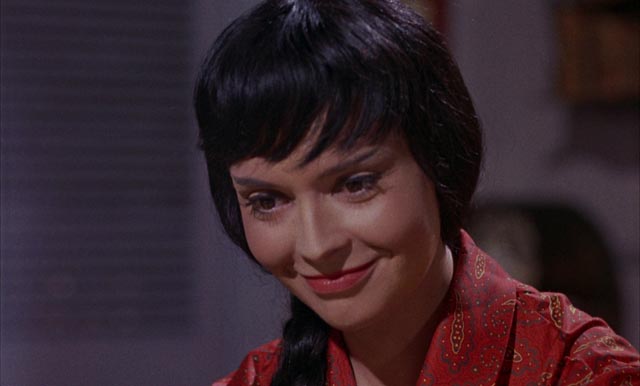
The Terror of the Tongs was whipped up in a hurry to make use of an expensive set built for a now-forgotten Hammer production called Passport to China (Michael Carreras, 1960), an Oriental waterfront complete with docked freighter. Hammer’s resident script factory Jimmy Sangster quickly repurposed the narrative structure of Stranglers, ransacked Sax Rohmer’s closet for a suitable villain, tossed in some torture and violence and a few surprises like the unexpected murder of Sale’s daughter, and the resulting potboiler was handed to Bushell to direct.
The sets are up to the studio’s usual impressive standard – production designer Bernard Robinson really knew how to squeeze the most out of limited resources – but Bushell was a pedestrian director and the resulting film looks as pokey and over-lit as a television show, despite having the great Arthur Grant behind the camera. This is very much lower-tier Hammer, like the mediocre Curse of the Mummy’s Tomb (1964) in the first Hammer box set from Indicator.
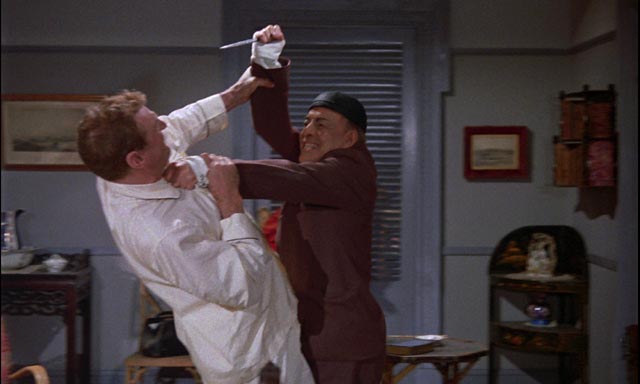
But what makes The Terror of the Tongs really problematic is the presence of Christopher Lee as Chung King, complete with epicanthic fold prosthetics and stilted accent. This was a performance Lee recycled without any perceptible changes in five Fu Manchu movies he made between 1965 and 1969, so he obviously had no problem doing it. And of course, it falls within a long tradition going back at least to 1919, when Richard Barthelmess played “the yellow man” in D.W. Griffiths’ Broken Blossoms, and continued in a line through Boris Karloff’s The Mask of Fu Manchu in 1932, Peter Lorre in a string of Mr. Moto mysteries, Warner Oland and Sidney Toler as Charlie Chan, Charles Middleton as the Emperor Ming in the Flash Gordon serials (1936, 1938, 1940), on through Marlon Brando in Teahouse of the August Moon (Daniel Mann, 1956) and Mickey Rooney in Breakfast at Tiffany’s (Blake Edwards, 1961). The sheer awfulness of the latter two would suggest that this kind of racial masquerade had become untenable by the end of the 1950s, yet here we have Lee and Hammer forging ahead without apparent self-awareness. Though the Empire had collapsed, the currents of arrogance and superiority still flowed strongly beneath the surface.
But awareness was nonetheless growing and the treatment of race caused problems for the studio with what was ironically one of their most commercially successful movies of the ’50s.
*
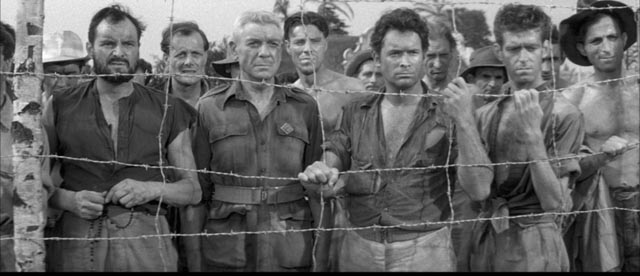
The Camp on Blood Island (Val Guest, 1958)
I’ve been trying to figure out the response to Val Guest’s The Camp on Blood Island (1958). At the time of release, it was only thirteen years after the period depicted. Wounds were still fresh, and Hammer’s reputation for indulging in graphic horrors would have put critics on alert. The idea of exploiting real horrors experienced by people still very much alive was obviously viewed with distaste, but the film fell squarely within an established genre – indeed, it was made while David Lean was working on The Bridge on the River Kwai (1957), a film depicting similar horrors, yet received with near universal acclaim. So part of the response can be attributed to a predisposition not to trust Hammer.
Camp, as the title indicates, is set on an island off the coast of Burma where British military and civilian prisoners are held by the Japanese. This is the basic situation familiar from any number of prisoner-of-war movies. Those who control the camp have the absolute power of life and death over the prisoners; the prisoners in turn struggle to survive and, on occasion, try to escape – risking severe punishment. Within the genre, there are gradations of brutality, occasionally a kind if grudging respect of one side for the other, but the balance of power is a constant. Japanese attitudes during the war resulted in a harsher regime than usually found in German prisoner-of-war camps. The Japanese military held in contempt those they considered inferiors – and by definition anyone taken prisoner was inferior; this attitude included even Japanese soldiers who were captured by the enemy.
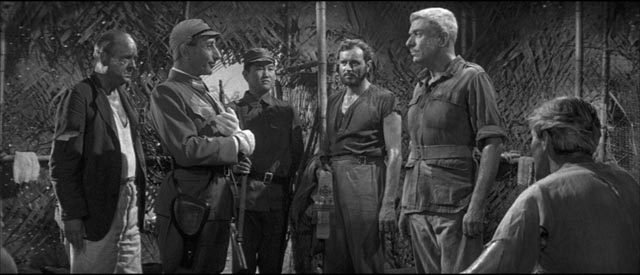
The harsh punishments meted out to the prisoners in Guest’s film were not exactly far-fetched. The Japanese worked large numbers of prisoners to death, starvation and disease claimed many more … all of this familiar from movies like Lean’s River Kwai, Bryan Forbes’ King Rat (1965) and Nagisa Oshima’s Merry Christmas, Mr. Lawrence (1983), even Steven Spielberg’s adaptation of J.G. Ballard’s Empire of the Sun (1987).
The central situation which drives the horrors of The Camp on Blood Island is the fact that Colonel Lambert, the senior British officer, knows that the war ended a few days earlier and he must prevent the Japanese commandant finding out because he’s promised that he’ll slaughter every prisoner in both the men’s and women’s camps if Japan loses. To suppress this news, Lambert has had a trusted man disable the radio while sending others on escape attempts in the hope of finding help on the mainland. Each of these acts brings down increasingly brutal reprisals, which turn the prisoners against Lambert, whom they see as irresponsibly provoking the Japanese.
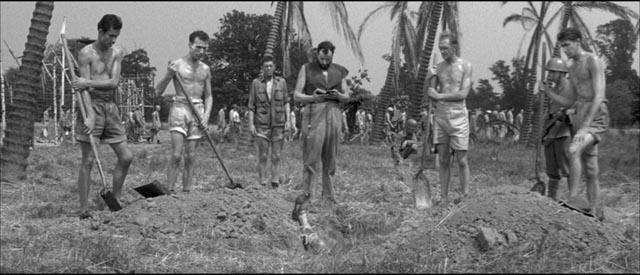
It’s a situation fraught with dramatic tension and impossible moral choices, and Andre Morrell does an excellent job as Colonel Lambert, with fine support from Michael Goodliffe as the padre, plus other Hammer regulars among the prisoners, including Richard Wordsworth and Barbara Shelley. Morrell’s position has parallels with Alex Guinness’ Colonel Nicholson in The Bridge on the River Kwai, his single-minded drive to somehow protect his men leading to an opposite outcome – in the end Lambert’s own actions lead to the slaughter he desperately wanted to forestall.
Under Val Guest’s lean direction (from a script he wrote with John Manchip White), The Camp on Blood Island is a tense and suspenseful exercise in its genre, effectively shot by Jack Asher in widescreen black-and-white which manages to transform a small bit of southern England into a sufficiently convincing tropical location. So why was it attacked at the time of release? And why, of all the movies in Indicator’s box set, does it still seem to have a toxic effect? Throughout the contextual extras on the disk and in the accompanying booklet, the tone ranges from wary to negative.
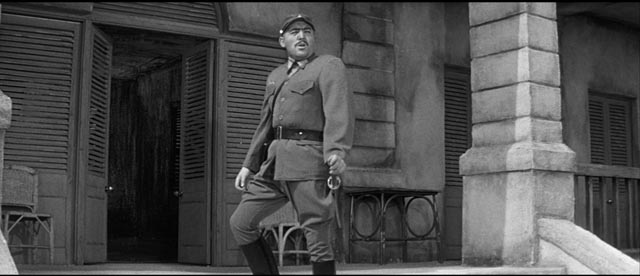
Surprisingly, contemporary critics, in addition to a general distaste for real-life horrors on screen, felt that the film should have been more nuanced and understanding of the Japanese. That criticism holds among the new interviews and essays. The camp commander and his men are one-dimensional villains, cartoon “Japs” straight out of a World War Two propaganda movie. Interestingly, one reason for this impression is Guest’s choice to leave all the Japanese dialogue unsubtitled, keeping the audience at a psychological distance, identification firmly limited to the prisoners. This is obviously an aspect of Guest’s urge towards realism, no matter what the subject at hand – a creative choice which added enormously to the effectiveness of his work in other genres (The Quatermass Xperiment, Quatermass II, The Abominable Snowman, The Day the Earth Caught Fire, Hell is a City, 80,000 Suspects, Jigsaw). So why did it fail him here?
The most obvious answer is the casting of non-Japanese performers as the Japanese characters. Marne Maitland turns up again, this time as the gleefully sadistic Captain Sakamura, who likes nothing better than beating, whipping and killing the prisoners. He’s pretty much given a free hand by Commander Yamamitsu (Ronald Radd), who spends most of his time sitting in his office eating. Milton Reid is there, lopping off prisoners’ heads with a katana … but what almost single-handedly destroys Guest’s otherwise careful attempt at authenticity is the ludicrous presence of iconic Hammer regular Michael Ripper as a singularly unconvincing Japanese soldier.
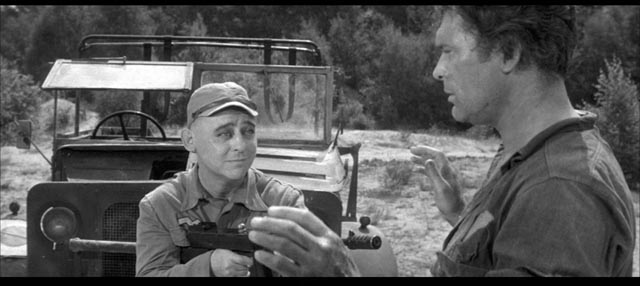
Would The Camp on Blood Island have had a more positive reception if the Japanese characters had been played by Japanese actors? Would Japanese actors have been able to convey a more nuanced impression, even in the situation depicted in the film? Given the dramatic context, it’s difficult to see what kind of mitigation could have been given to make the cruelty more palatable. If Spielberg had cast a German actor in the Ralph Fiennes role in Schindler’s List (1993), would the camp commandant have been less of a cartoon Nazi villain? … could we have gained a sympathetic understanding of his motives for the mass murder of Jews?
Why, for instance, is it more acceptable to watch the sadistic horrors in Oshima’s Merry Christmas, Mr. Lawrence because we have access to the Japanese officer’s inner life and its reflection in the English prisoner’s own psychology, a shared sado-sexual impulse which implicates the victim in his own destruction? Why is it less outrageous that faceless German soldiers murder the recaptured prisoners in violation of the rules of war in John Sturges’ The Great Escape (1963)? It seems that the real problem is not so much the cruelties depicted by Guest as the egregious racial masquerade, something he and Hammer made a deliberate effort to atone for the following year.
*
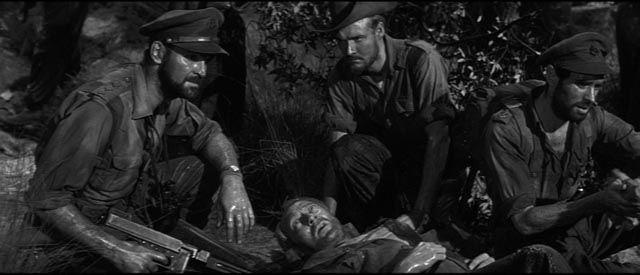
Yesterday’s Enemy (Val Guest, 1959)
I was already familiar with The Camp on Blood Island when I bought a copy of Sony’s region 2 DVD in 2011, but I don’t think I’d even heard of the film released at the same time as a kind of companion disk. And yet Yesterday’s Enemy (1959) was one of Val Guest’s favourites among his own work and had been well-received on its original release, although it hadn’t proved to be as commercially successful as its predecessor.
Yesterday’s Enemy, like much of Guest’s work for Hammer in the 1950s, was based on a television play, this time written by first-timer Peter R. Newman rather than Nigel Kneale. The project may have seemed like an obvious choice to counter the attacks leveled against Guest and the studio for Camp; another grim story of the war in Burma, Yesterday’s Enemy was far more nuanced, not only humanizing the Japanese antagonist, but courting a different kind of controversy by portraying a war crime committed by a British unit under great stress behind enemy lines in the jungle.
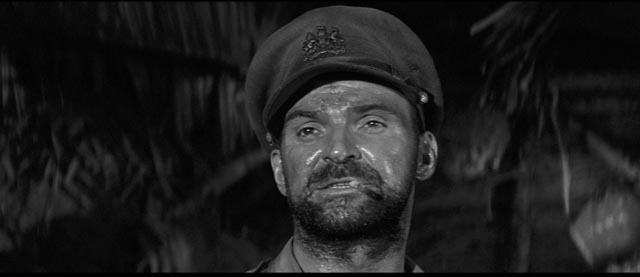
Trying to make their way back to their own lines, a small unit is ambushed in a Burmese village. During the fight, a high-ranking Japanese officer is killed and documents are seized. Captain Langford (Stanley Baker) is convinced that the documents are important, but is unable to decipher the coded symbols on a map. With their radio not working, a long way to travel, and the Japanese closing in, it is urgent that he understand his men’s position. And so he begins using brutal interrogation techniques on a Burmese man who was working as a translator for the Japanese. When the man continues to resist, even in the face of death threats, Langford makes an appalling decision against the protests of the unit Chaplain (Guy Rolfe) and journalist Max (Leo McKern): to prove his seriousness to the prisoner, he takes two of the civilian villagers and has his men execute them.
This murder of civilians violates all the rules of “civilized” warfare, but it works. The prisoner explains the significance of the map (the Japanese are preparing what will be a devastating counterattack against the British lines) and it’s crucial to get the information out. A few men are sent off into the jungle, while the rest prepare a rear-guard action in the village to buy them some time.
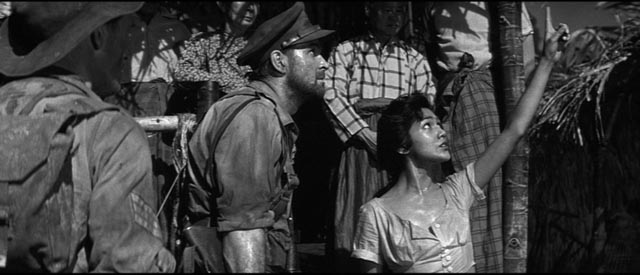
Langford understands the implications of his own actions, but also understands that once in the midst of a deadly situation, the rules meant to keep war “civilized” are likely to get in the way of survival. The point of Newman’s play is that war in its essence is an uncivilized, immoral enterprise which forces on individuals horrific decisions which not only go against deeply held convictions, but destroy them psychologically. There is no room here for heroism and noble self-sacrifice, only brutality and despair.
The men sent back with the vital intelligence are ambushed and killed; the village is overrun by the Japanese, with Langford and his few remaining men – including the Chaplain and Max – taken prisoner. Now Langford is subjected to interrogation by an intelligent and sensitive enemy officer who is just as determined to get crucial information from the British … and who eventually uses the exact same tactics as Langford. Both sides consist of decent men twisted by war into monsters.
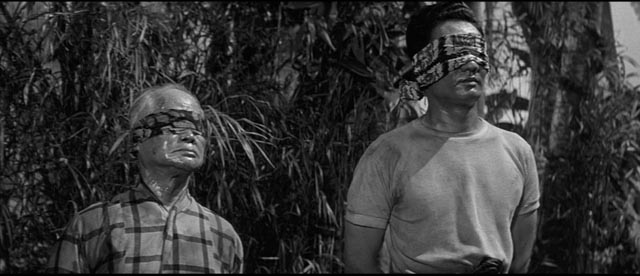
Here the good-bad dichotomy drawn so starkly in The Camp on Blood Island is despairingly complicated – there are admirable qualities in both the Japanese and British characters, but both have monstrosity imposed on them by the circumstances they find themselves trapped within. Although the philosophical arguments – between Langford and Max and the Chaplain, and between Langford and the Japanese officer Yamazaki (Philip Ahn) – are occasionally too much on the nose, Newman’s script is subtle and complex, and the cast does a superb job of drawing out the issues. Stanley Baker, in the first of two brilliant performances for Guest (the other being Hell is a City, 1960), was never better; Philip Ahn (although actually Korean rather than Japanese) does much to wipe away the memory of the caricatures in Camp, matching Baker’s uncompromising toughness, but keeping it beneath an external calm which suggests that he lacks Langford’s inner conflict because he has an absolute conviction that his actions are justified by his nation’s cause.
As in many of Guest’s films, the cast is a strong, well-balanced ensemble which provides invaluable support to the leads. In addition to Rolfe and McKern, the unit includes Gordon Jackson as the sergeant, David Oxley as the doctor, and Richard Pasco as a lieutenant on the verge of breaking. Edwina Carroll (born in Burma) has a small but crucial role as a villager who confronts Langford with the undeniable fact that for civilians all armies are the same, the British and the Japanese both destroyers of innocent lives.
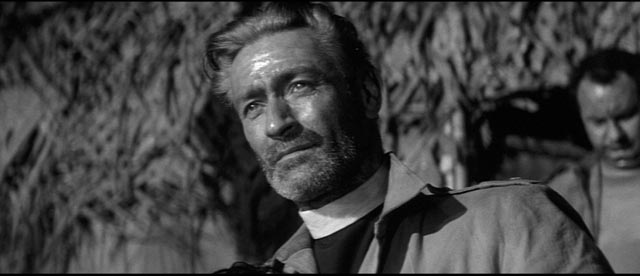
Once again shot in widescreen black-and-white by Arthur Grant, Yesterday’s Enemy is in one significant way quite different from Guest’s other work. The production was faced with the problem of depicting action deep in a tropical forest without having the budget to go on location. This posed a challenge for a director who preferred to shoot on location with a documentary-like camera style. Thanks to the ingenious work of Hammer’s master of production design, Bernard Robinson, the film does achieve a convincing impression of dense, steaming jungle on sets built at Shepperton Studios, utilizing a series of mobile, interlocking platforms which permitted a wide range of changing perspectives; and at Bray, where the river scenes were shot in a tank installed on a soundstage.
Yesterday’s Enemy is a claustrophobic film, with an overwhelming feeling that these men are hopelessly trapped from the opening moments. This sense of being closed in does at times give it the air of a filmed play, yet Guest manages to invest it with a sense of scale, particularly in two big action scenes – the initial fight when the unit takes the village from the Japanese, and the ambush by the river when the Japanese retake the area.
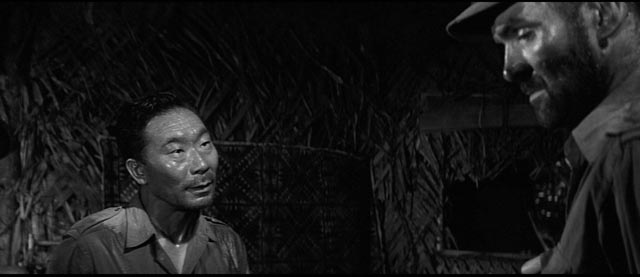
Obviously many factors go into the success or failure of a particular film, and the other three movies in this set are all compromised by their attitudes towards race and the problematic casting of non-white roles. Yesterday’s Enemy gets the balance right, not least by ditching any romantic illusions about the moral superiority of the British; war is an appalling business and there are inevitably crimes committed on all sides. Newman and Guest and the excellent cast don’t flinch from this fact and the result is one of the strongest and most mature films ever produced by Hammer.
*
As with the other sets in this series, Indicator has loaded the disks with illuminating extras. There are commentaries, retrospective documentaries, interviews with participants, featurettes on the music and actresses, and a lengthy piece by former BBFC examiner Richard Falcon about the treatment of The Stranglers of Bombay by the censors (who gave it a lenient A rather than an X). There are three cuts of The Stranglers of Bombay – the UK theatrical, the US theatrical and a new combined version which is as close as we’re likely to get to a full, pre-censor cut; and two of Yesterday’s Enemy – the UK original and the US version with the English swearing toned down. Each film gets its own thick booklet with essays, archival material and excerpts from contemporary reviews.
Comments